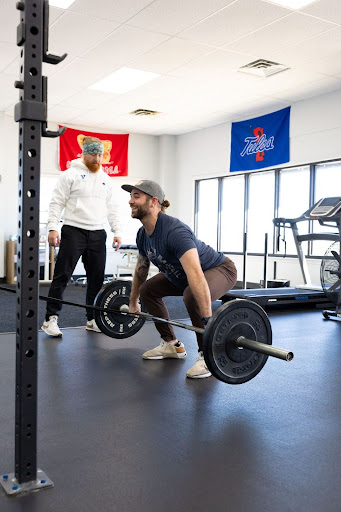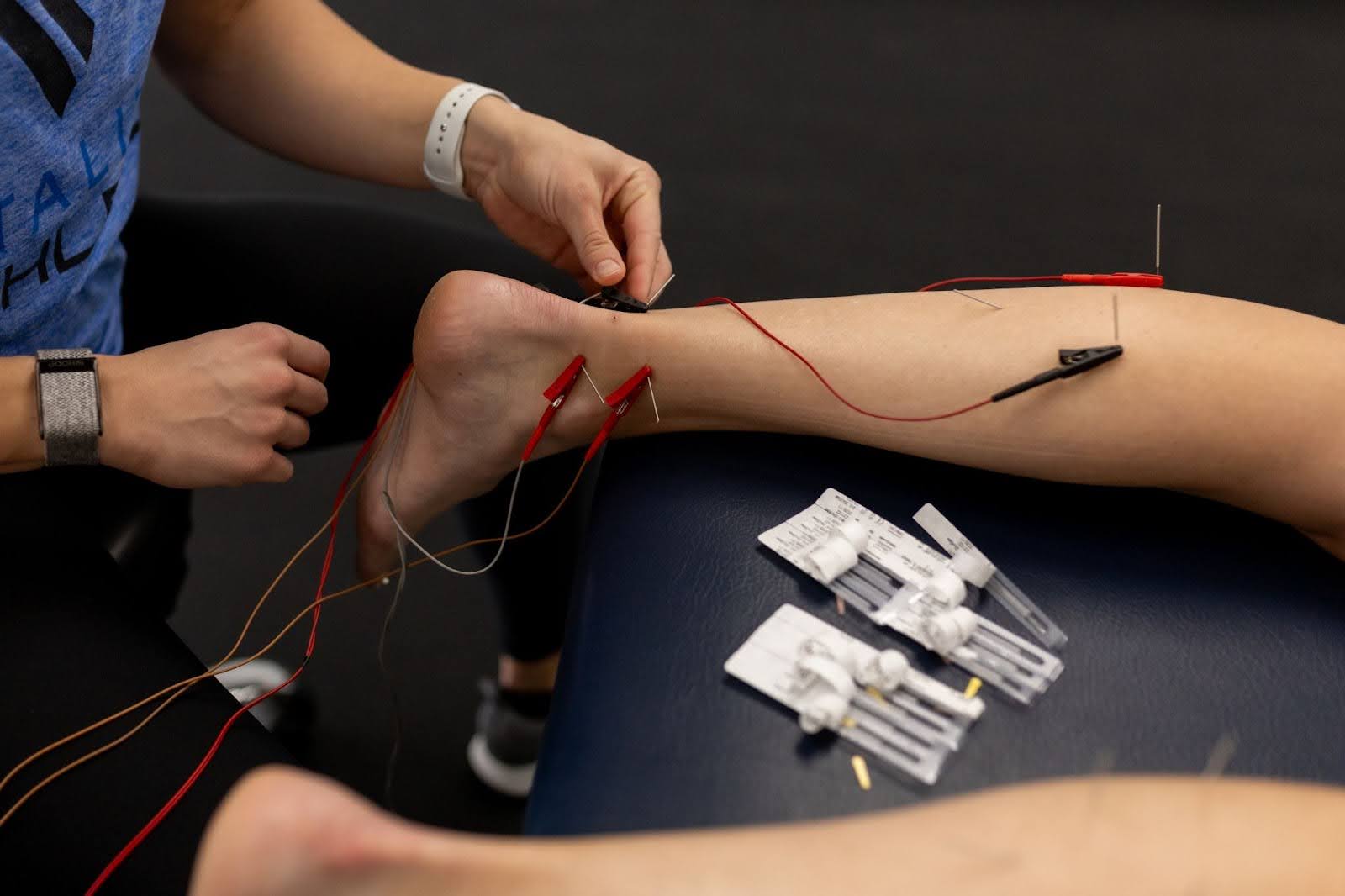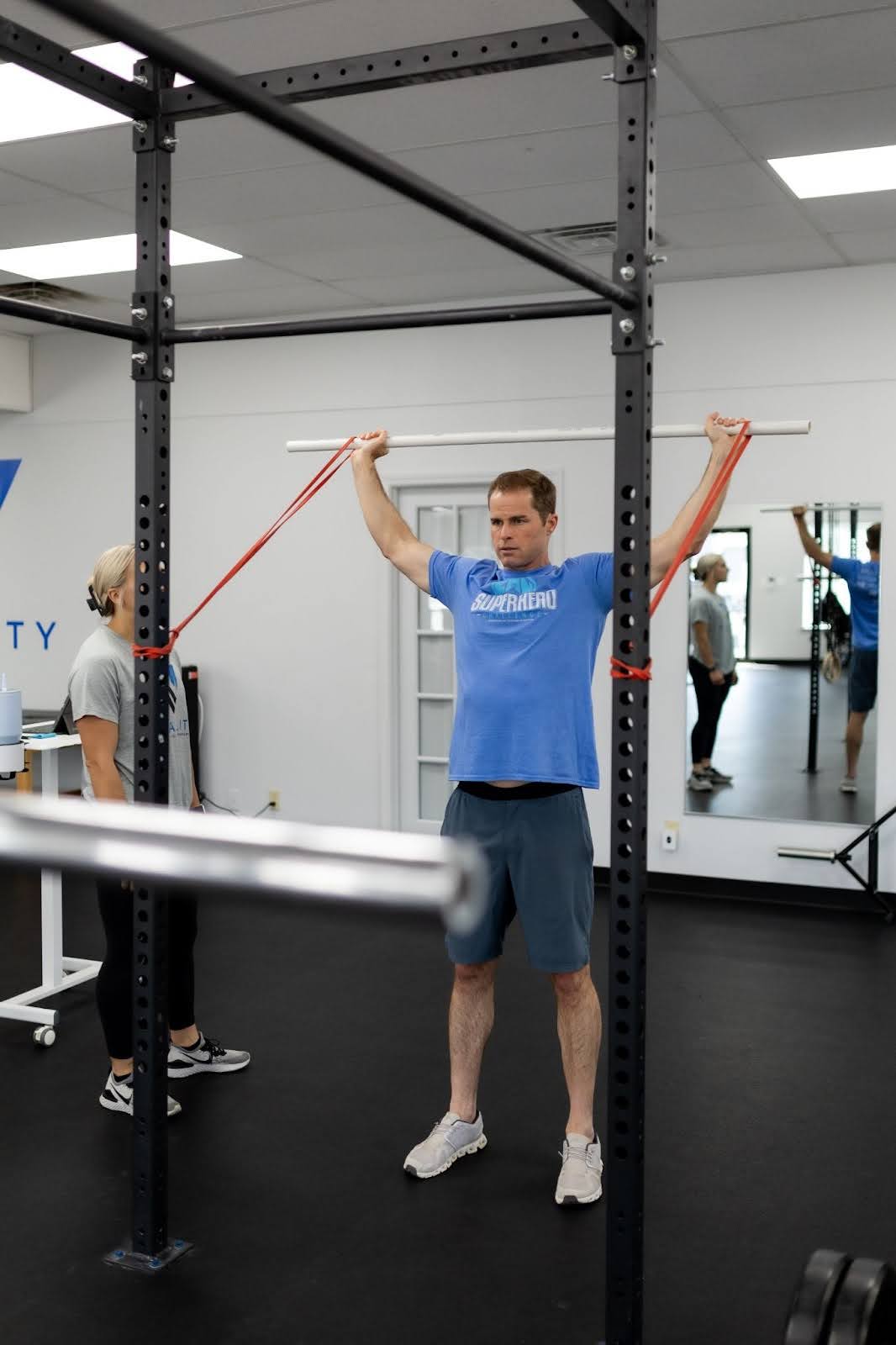By the team at Vitality Therapy and Performance, Tulsa, OK
If you’ve dealt with stubborn joint pain, chances are someone, maybe even your doctor, has recommended a cortisone injection. They’re one of the most common treatments for inflammatory pain, especially in areas like the knee, shoulder, hip, or spine. But at Vitality, we’re often asked questions about these shots:
- “Should I get a cortisone shot before starting PT? Will it help or hurt my progress?”
- “Do I need to rest after a cortisone injection?”
Let’s break down what the research says, what we’ve seen clinically, and how we approach this decision at our clinic.
What Is a Cortisone Shot, Really?
A cortisone shot is a corticosteroid injection, often used to reduce inflammation in joints or soft tissues. It doesn’t heal the issue—it just reduces the inflammatory process.
In acute cases, that can mean less pain and more mobility, which sounds great… but that’s only part of the story.
What Does the Research Say?
🔬 The Short-Term Gains:
Multiple high-quality studies confirm cortisone shots can provide short-term relief, especially for inflammatory conditions like bursitis, tendinopathies, and osteoarthritis.
- A 2015 meta-analysis in the Annals of Internal Medicine found corticosteroid injections for knee osteoarthritis provided significant pain relief for up to 4 weeks—but no difference at 6 months compared to placebo.
- A 2021 systematic review in British Journal of Sports Medicine noted short-term improvements in pain and function for shoulder impingement, but no long-term benefits.
❗ The Long-Term Trade-Offs:
Here’s the catch: frequent or early reliance on cortisone can potentially delay healing or even weaken soft tissue over time.
- A 2019 RCT published in The Lancet on lateral epicondylalgia (tennis elbow) showed that participants who received a cortisone shot had poorer long-term outcomes and higher recurrence rates than those who did not.
- Animal models and small human studies suggest that repeated corticosteroid exposure can impair tendon cell viability and collagen structure.
Cortisone + Physical Therapy: A Strategic Pairing
Cortisone shots aren’t inherently bad. In fact, when timed right and paired with targeted, high-level physical therapy, they can open a therapeutic window—where the pain is reduced enough to begin strengthening, movement retraining, or neuromuscular re-education that was too painful to address before.
But here’s the key: the shot can’t be the whole strategy.
At Vitality, we recommend the cortisone + PT combo in cases where:
- Pain is so severe that a patient can’t tolerate movement, manual therapy, or loading.
- There’s clear, image-confirmed inflammation (e.g., bursitis or joint effusion).
- The injection is being used to “buy time” while also committing to a rehab program designed to address the root cause.

Are There Better Alternatives?
Depending on your specific condition, there are often better first-line strategies than cortisone alone—especially if your goal is long-term healing, not just temporary pain relief.
- Dry Needling + PT: Great for myofascial pain, trigger points, and improving neuromuscular activation. Often faster acting and more sustainable than cortisone for soft tissue issues.
- PRP (Platelet-Rich Plasma): Especially promising for chronic tendinopathies and mild OA. A 2020 meta-analysis in American Journal of Sports Medicine found PRP outperformed cortisone at 6- and 12-month follow-up for pain and function in knee OA.
- Exercise-Based Therapy: Still the gold standard for nearly all musculoskeletal pain. You don’t always need an injection to get started—sometimes it just takes the right progression, done at the right pace, by the right provider.

Our Take at Vitality Therapy and Performance
We’re not anti-cortisone. We’re pro-strategy. A cortisone shot might be a useful tool in your recovery plan, but not the first tool we reach for.
Here’s how we approach it:
- Evaluate the cause of your pain—not just the site.
- Test movement and strength under skilled, one-on-one care.
- Discuss options like dry needling or regenerative treatments if inflammation is limiting progress.
- Refer for injections only when the inflammation is impeding your ability to participate in rehab—or if it’s necessary to break a chronic pain cycle.
What To Expect After Receiving A Cortisone Injection
Do You Need To Rest After A Cortisone Injection?
Yes, you typically need to rest after a cortisone injection. Most healthcare professionals recommend avoiding strenuous physical activity for 24 to 48 hours to allow the corticosteroid medication and local anesthetic to settle into the affected area.
At Vitality Therapy and Performance, we tell many patients to treat pain with respect during this period. Even if you feel immediate pain relief, the injection site is still vulnerable.
How Long Should You Modify Your Exercise Routine?
The amount of time you need to rest varies depending on your specific joint pain and the location of the injection. If the affected joint is weight-bearing, like the knee or hip, you may need to rest longer to ensure a successful recovery.
General guidelines include:
- Light stretching and gentle range-of-motion exercises after 48 hours
- No heavy lifting, running, or high-impact sports for at least 7 days
- Gradual return to full activity over the next few weeks with supervision
If you are dealing with sports-related injuries, modifying your training during the recovery process helps prevent cartilage damage or a steroid flare.
Common Side Effects And How We Help Manage Them
Even though cortisone injections work well for many people, injections carry potential side effects. You might experience a temporary increase in pain and inflammation called a steroid flare. Some patients also report:
- Flushing of the face
- Blood sugar spikes in people with diabetes
- Blood pressure changes
- Subcutaneous fat atrophy at the injection site
- Skin discoloration over the affected area
We monitor your response closely and adjust your therapy plan to keep your immune system strong and avoid putting too much discomfort on the healing tissues.
The Role Of Exercise After Corticosteroid Injections
Why Exercise Is Critical For Long-Term Pain Relief
Even after corticosteroid injections provide pain relief, maintaining a consistent exercise routine is the key to long-term success. Glucocorticoid therapy may reduce inflammation fast, but without proper strengthening and neuromuscular re-education, the underlying problem remains.
At Vitality Therapy and Performance, we design programs to:
- Relieve pain while restoring joint stability
- Improve tendon health to protect against systemic absorption risks
- Enhance mobility so you can return to normal activities without fear
Physical activity is not just safe after a cortisone shot—it is essential for a full recovery.
How Much Exercise Is Safe After A Shot?
You should start slow, focusing on precision over intensity. When you return to activity, we guide you with:
- Gentle activation drills within pain-free ranges
- Progressive loading over a few weeks
- Clear boundaries to avoid stressing the injected soft tissues directly
If you have a physically demanding job or competitive athletic schedule, we create return-to-sport timelines that prioritize healing and reduce swelling in the affected area.
When We Recommend Cortisone Injections For Athletes
Strategic Use In Sports Injuries
Corticosteroid injections are not our first recommendation, but they are a powerful tool when used thoughtfully. We might recommend cortisone injections when:
- You cannot tolerate basic rehab movements without significant pain
- There is an urgent need to relieve pain before an important event like the Tulsa Tough cycling race or the Route 66 Marathon
- There is significant, image-confirmed inflammation such as bursitis, psoriatic arthritis, or rheumatoid arthritis impacting performance
Timing matters. An injection should serve as a bridge, not a crutch, allowing you to re-engage with a high-level rehab program.

Supporting Your Recovery In Tulsa And Beyond
Why Choose Vitality Therapy And Performance?
Many patients wonder if cortisone injections work better when combined with targeted sports PT. Based on our clinical experience and current research, the answer is yes, when paired with the right treatment.
At Vitality Therapy and Performance, you are not just getting pain relief. You are getting:
- One-on-one skilled movement assessments
- Customized sport-specific exercise progression
- Hands-on therapies like dry needling for soft tissue pain
- Cutting-edge treatments designed to address the root cause, not just symptoms
Whether you are gearing up for Tulsa’s SoccerCity tournaments or the USA BMX Grand Nationals, we help you optimize recovery and get back to the activities you love.
Bottom Line
Cortisone can offer short-term relief, but it should never be the whole treatment plan. At Vitality, we aim to treat the why, not just the what hurts. If you’re considering a cortisone shot, let’s have a conversation first—we’ll help you decide if it’s the right step, and what to do next.
Ready to move beyond temporary relief? Schedule a one-on-one performance therapy evaluation with our team today.

